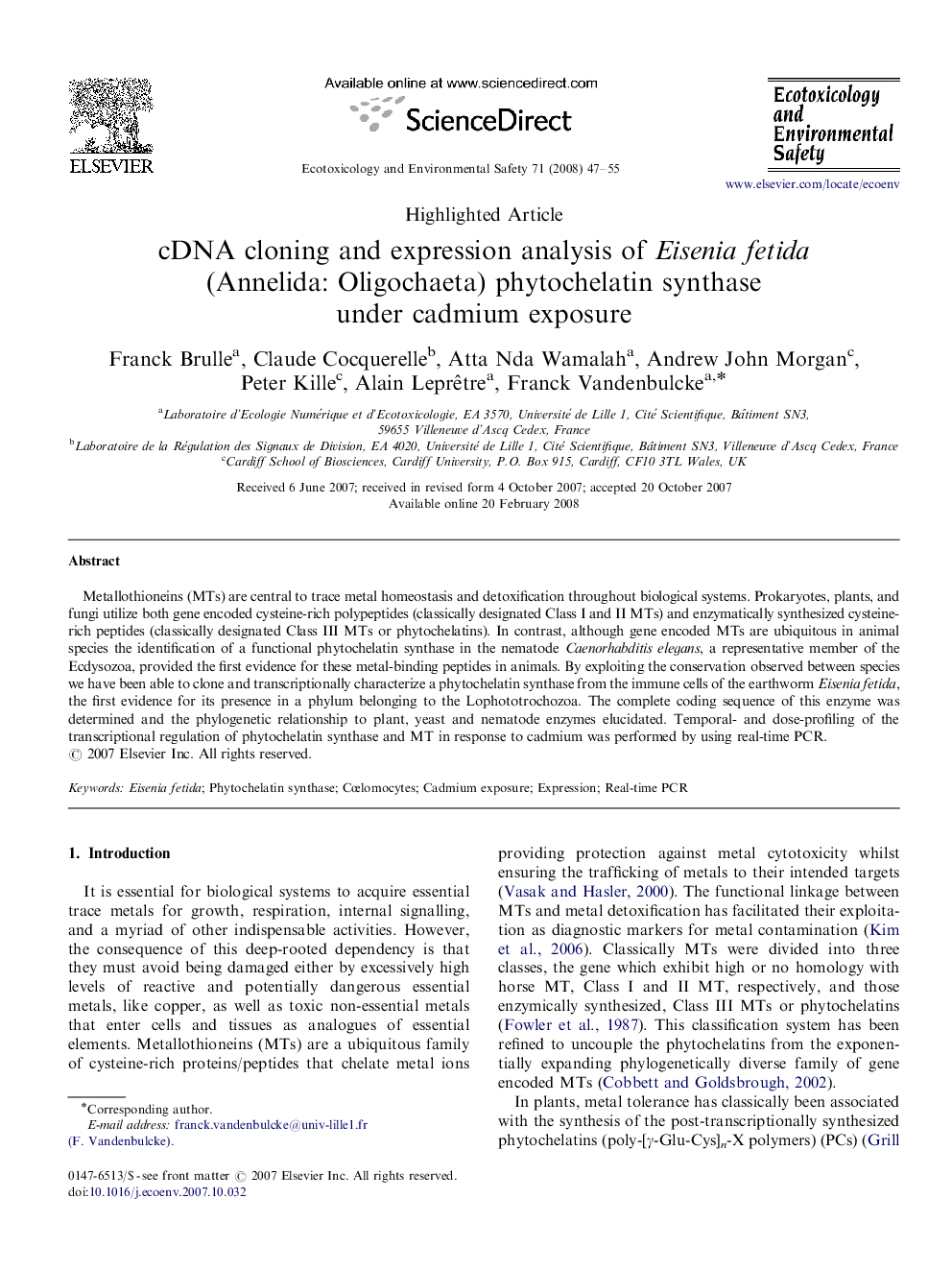| Article ID | Journal | Published Year | Pages | File Type |
|---|---|---|---|---|
| 4421855 | Ecotoxicology and Environmental Safety | 2008 | 9 Pages |
Metallothioneins (MTs) are central to trace metal homeostasis and detoxification throughout biological systems. Prokaryotes, plants, and fungi utilize both gene encoded cysteine-rich polypeptides (classically designated Class I and II MTs) and enzymatically synthesized cysteine-rich peptides (classically designated Class III MTs or phytochelatins). In contrast, although gene encoded MTs are ubiquitous in animal species the identification of a functional phytochelatin synthase in the nematode Caenorhabditis elegans, a representative member of the Ecdysozoa, provided the first evidence for these metal-binding peptides in animals. By exploiting the conservation observed between species we have been able to clone and transcriptionally characterize a phytochelatin synthase from the immune cells of the earthworm Eisenia fetida, the first evidence for its presence in a phylum belonging to the Lophototrochozoa. The complete coding sequence of this enzyme was determined and the phylogenetic relationship to plant, yeast and nematode enzymes elucidated. Temporal- and dose-profiling of the transcriptional regulation of phytochelatin synthase and MT in response to cadmium was performed by using real-time PCR.
